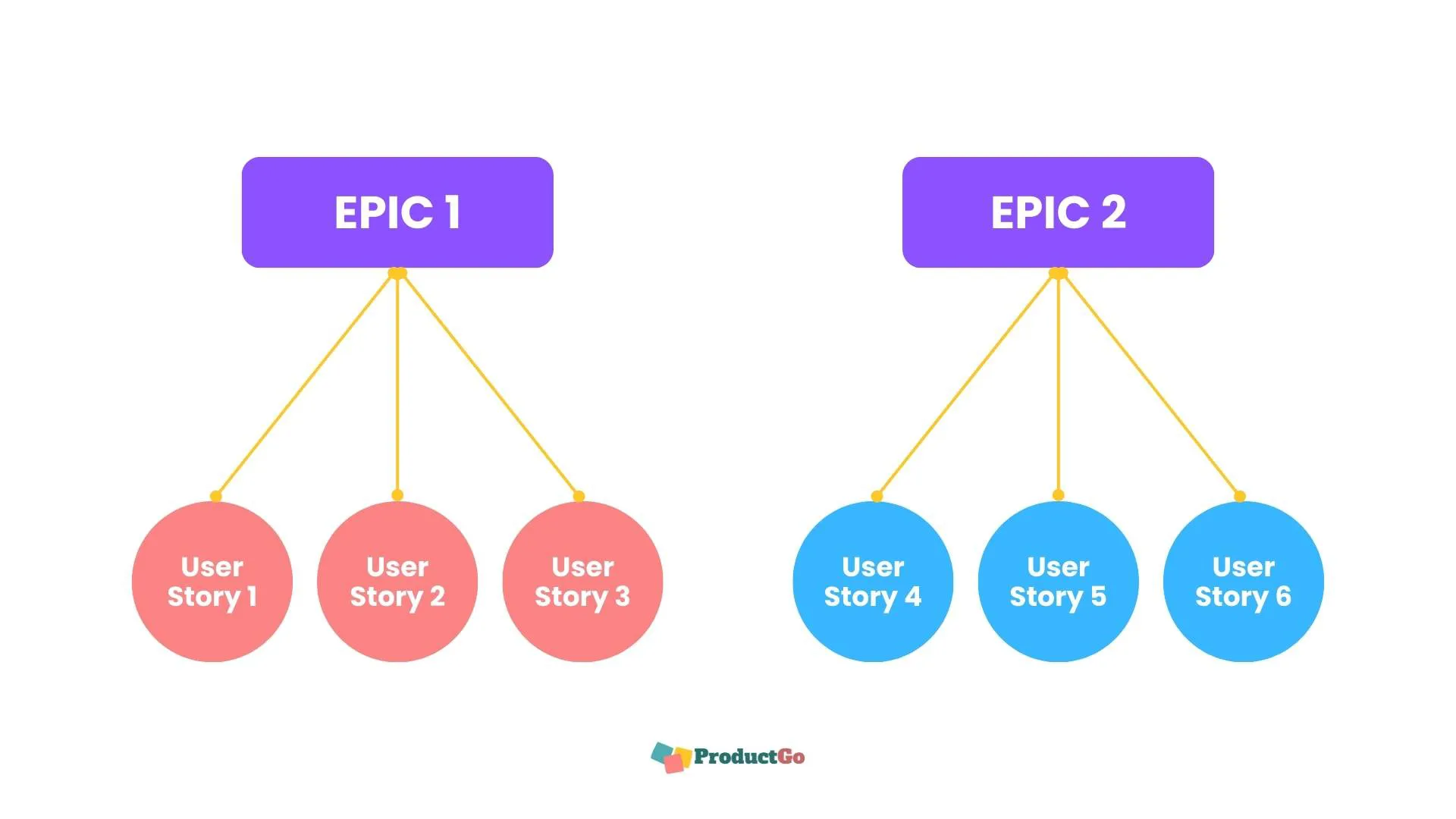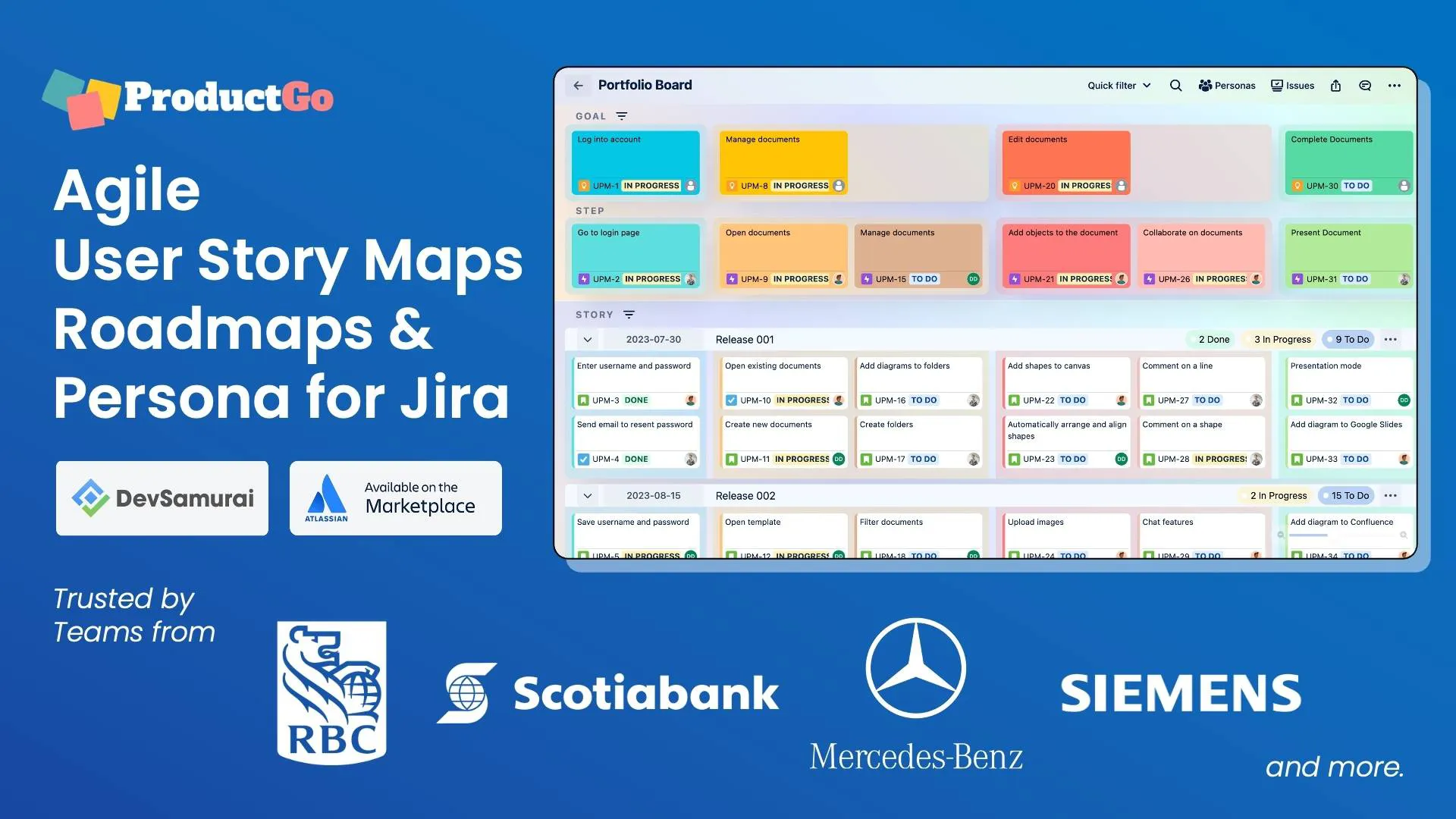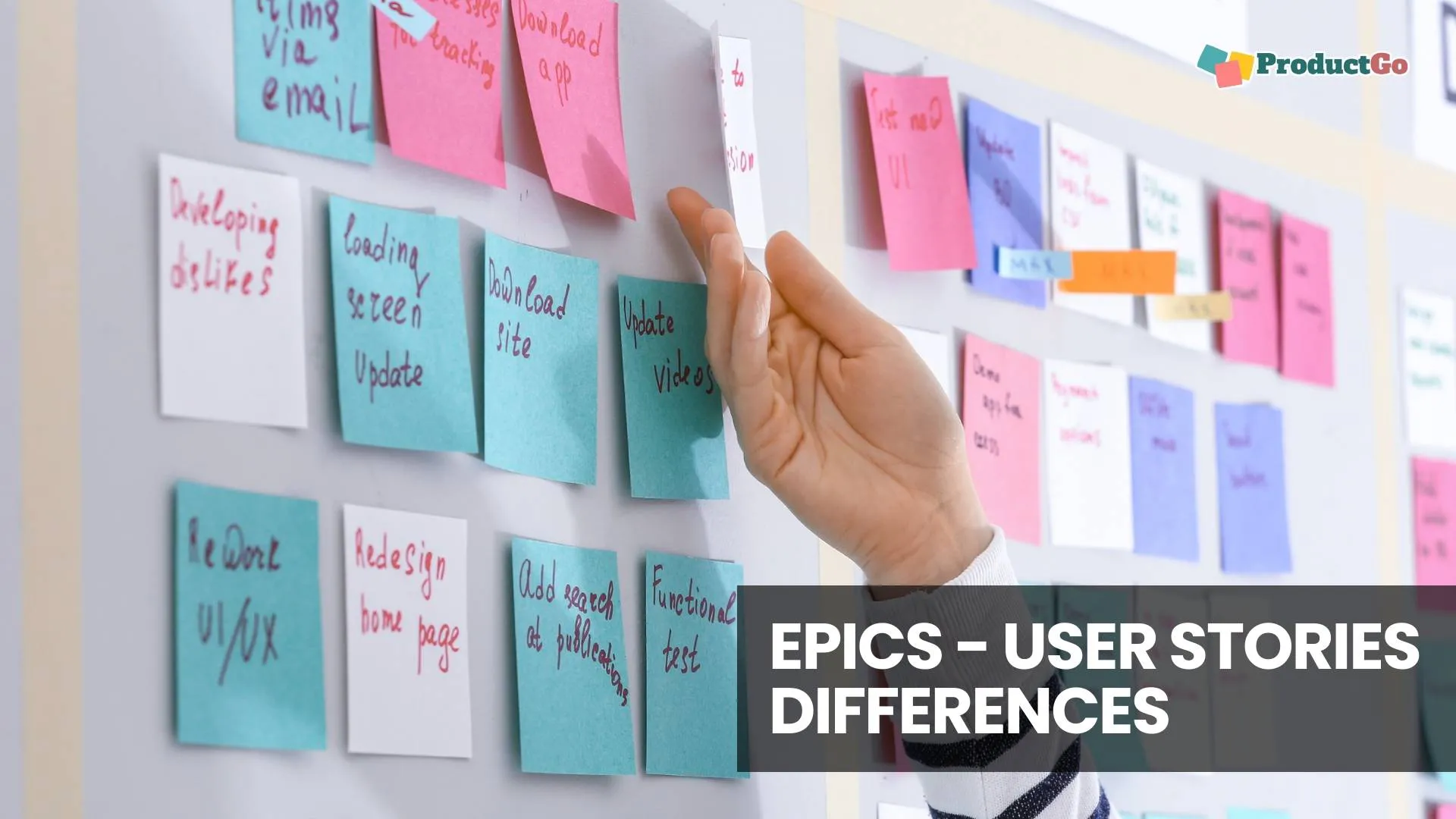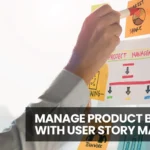Agile methodology is a modern approach to project management, primarily used in software development. It values flexibility, iterative progress, and collaboration over strict planning and rigid structures. This methodology adapts to changes and focuses on delivering functional parts of the project, known as increments, in short cycles called sprints.
Together, Epics and User Stories ensure that Agile projects are both well-guided by overarching goals (Epics) and effectively executed through detailed, user-focused tasks (User Stories). This combination supports Agile’s core principles of flexibility, continuous improvement, and customer-centric development.
Table of Contents
Epics
An Epic in Agile is a large body of work that encompasses a significant feature or function in the project. It’s broader and more comprehensive than a User Story, often covering a complex initiative that cannot be completed in a single sprint.

Epics serve as a key organizing tool at the beginning of Agile development projects. They help in structuring the product backlog and preventing it from becoming unwieldy by initially keeping user stories in a larger, more manageable form.
Throughout the project, as priorities are established, Epics are broken down into smaller User Stories. This breakdown happens when an Epic nears the top of the backlog, ensuring that only the most relevant parts are detailed and ready for sprint planning.
Epics essentially act as a compass, guiding Agile teams through the initial phases of project planning by offering a high-level perspective while also laying the groundwork for the subsequent breakdown into more granular User Stories.
User Stories
A User Story in Agile is a small, specific requirement focusing on delivering value to the end-user. It’s a concise description of a software feature from the perspective of the end-user, emphasizing the need and the benefit.
User Stories follow a structured format, commonly phrased as
As a [type of user], I want [a specific functionality], so that [a particular benefit or outcome is achieved].
This format helps in clearly defining the goal and the acceptance criteria, which are essential for the completion and success of the User Story.

User Stories are designed to be independent and flexible, making them easier to plan, prioritize, and manage within a sprint. Their smaller, more focused nature allows for quick development and delivery, providing immediate value and facilitating continuous feedback and improvement.
Differences Between Epics and User Stories
In Agile project management, two key concepts often need clarification among teams: Epics and User Stories. While both are integral to the Agile process, they differ significantly in their scope, complexity, and how they are used in planning and execution.
| Aspect | Epic | User Story |
| Scale and Scope | Large work item covering a broad feature or functionality, often spanning multiple sprints. | Smaller, more specific requirements focus on a single aspect of functionality, usually completed within a single sprint. |
| Complexity and Detail | High-level concepts with more complexity, providing a general overview without detailed requirements. | More focused and detailed, describing specific aspects of a feature, simpler to understand and implement. |
| Estimation and Planning | Challenging to estimate due to broader scope; serves as a guideline in initial planning stages. | Allows for more accurate estimations of effort and duration due to smaller scale and defined scope. |
Understanding these differences is crucial for effective backlog management and smooth development.
In general:
- Epics define the “why” and “what” on a larger scale, while user stories specify the “how” with actionable details.
- Breaking down epics into user stories allows for iterative development, delivering value in smaller chunks and adapting to feedback.
- Epics prioritize larger goals while user stories keep the backlog manageable and avoid overloading teams with details.
- Both epics and user stories promote transparency and communication among stakeholders, ensuring everyone is aligned on the project’s direction.
→ Related content: Epic vs User Story vs Tasks vs Initiatives vs Themes
From Epics to User Stories: The Breakdown Process
Identifying and Defining Epics
The process begins by identifying and defining Epics, which are large-scale features or functionalities in the project. These Epics provide a high-level view of the major components that the project aims to deliver.
Decomposing Epics into User Stories
Once Epics are identified, they are broken down into smaller, more manageable User Stories. This decomposition involves segmenting the broader Epic into specific functionalities or requirements that can be completed within a single sprint.

Prioritizing User Stories Within an Epic
After breaking down the Epics, User Stories are prioritized based on factors like value, risk, and dependencies. This step ensures that the most critical aspects of the Epic are addressed first, aligning with the project’s goals and timelines.
This process of transforming Epics into User Stories is essential in Agile methodology, ensuring that large, complex requirements are made actionable and manageable for teams.
Example of Epic and User Story
Epic: Develop a new online shopping website.
User Stories:
- As a customer, I want to create an account so that I can make purchases and track orders.
- As a shopper, I want to search for products by category to find what I need quickly.
- As a user, I want to securely save my payment information to expedite future purchases.
Writing Effective Agile Epics and User Stories
Crafting Epics
An effective Epic should be clear and concise, conveying the main idea without unnecessary details. It should be measurable, with defined success criteria to track progress, and must deliver tangible benefits to users or stakeholders. Use simple language and focus on the “what” rather than the “how” to ensure clarity.
Developing User Stories
A well-written User Story should be user-centric, describing the requirement from the perspective of the end-user. It should be clear, concise, and include specific acceptance criteria that outline the conditions for its completion. Collaborating with team members and stakeholders is crucial to ensure a shared understanding of the User Story.
Best Practices for Both
For both Epics and User Stories, using action verbs and simple language enhances clarity. It’s important to identify the primary users or stakeholders who will benefit and to ensure that the descriptions focus on delivering value. Regular collaboration and refinement are key to maintaining their relevance and effectiveness in the Agile process.
Tools and Techniques for Managing Epics and User Stories
Introducing Agile User Story Map, Roadmap, and Persona for Jira – ProductGo by DevSamurai
ProductGo is a comprehensive tool designed to enhance the management of Epics and User Stories in Agile projects. It offers a range of features that facilitate better product management within the Jira ecosystem.

Key Features of ProductGo:
- Agile User Story Mapping: This feature allows teams to visually plan and prioritize their product backlog. It aids in visualizing the user journey and breaking down the product into more manageable chunks, making it easier to transform Epics into User Stories.
- Portfolio Board for Jira: With this tool, teams can manage a portfolio of projects or products flexibly and customize them. It provides a visual representation of the portfolio, helping teams understand the overall scope, identify dependencies, and prioritize projects effectively.
- Roadmap for Jira: This feature enables users to visualize the Release/Sprint roadmap interactively. It’s an essential tool for project managers and product owners, assisting in task planning in a Gantt-like timeline structure.
The ProductGo tool addresses common challenges in Agile project management, such as managing large product backlogs, tracking project progress, and understanding end-user needs. It encourages a customer-focused approach, facilitating product discovery and task prioritization through its intuitive features.
For Agile teams using Jira, this tool can be a valuable asset in ensuring efficient and effective management of Epics and User Stories, enhancing collaboration and clarity in project management processes.
For more information, you can explore the tool on DevSamurai’s official website and Atlassian Marketplace.
Final Words
Understanding the roles and differences of Epics and User Stories in Agile methodology is fundamental for successful project management in software development. Epics provide the overarching vision and objectives, offering a high-level roadmap for the project. In contrast, User Stories bring this vision to life through detailed, actionable tasks, ensuring that each sprint delivers tangible value and aligns with the end user’s needs.
Embracing the Agile approach with a clear understanding of its components like Epics and User Stories equips teams to adapt to changes swiftly and deliver high-quality products.
For a more in-depth exploration of this topic, including detailed examples and best practices, you can visit Epic vs User Story vs Tasks vs Initiatives vs Themes with Examples for comprehensive insights.













